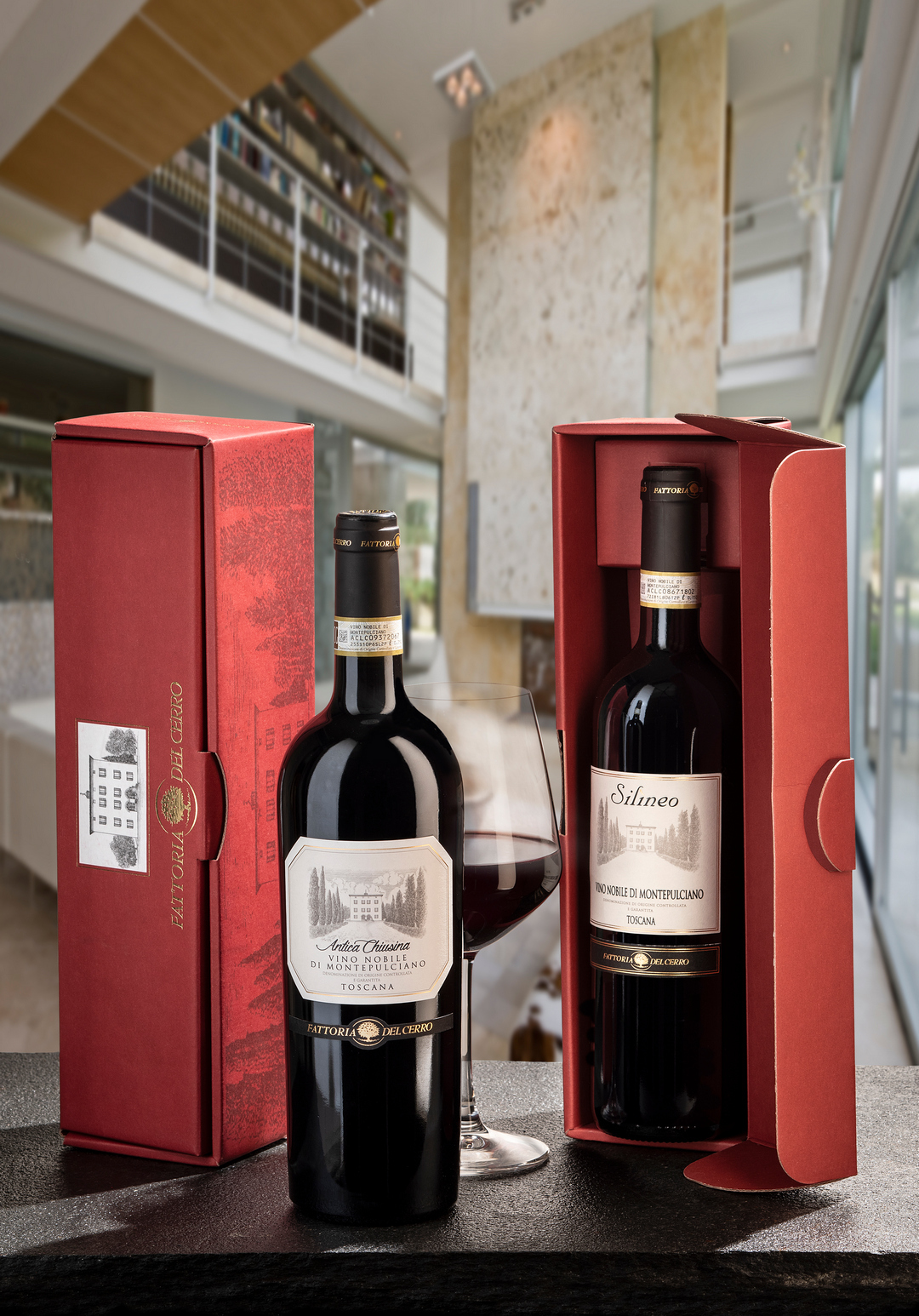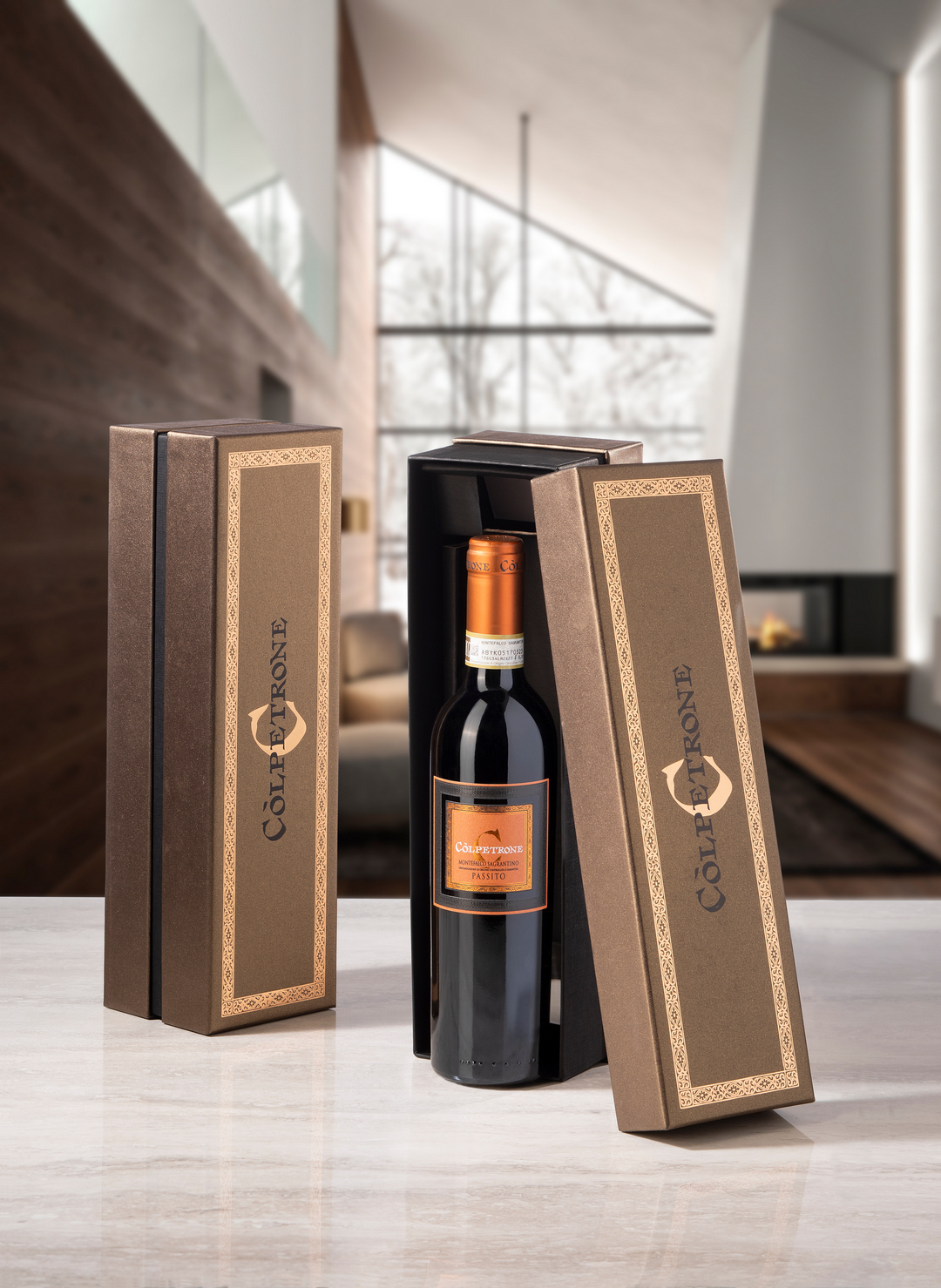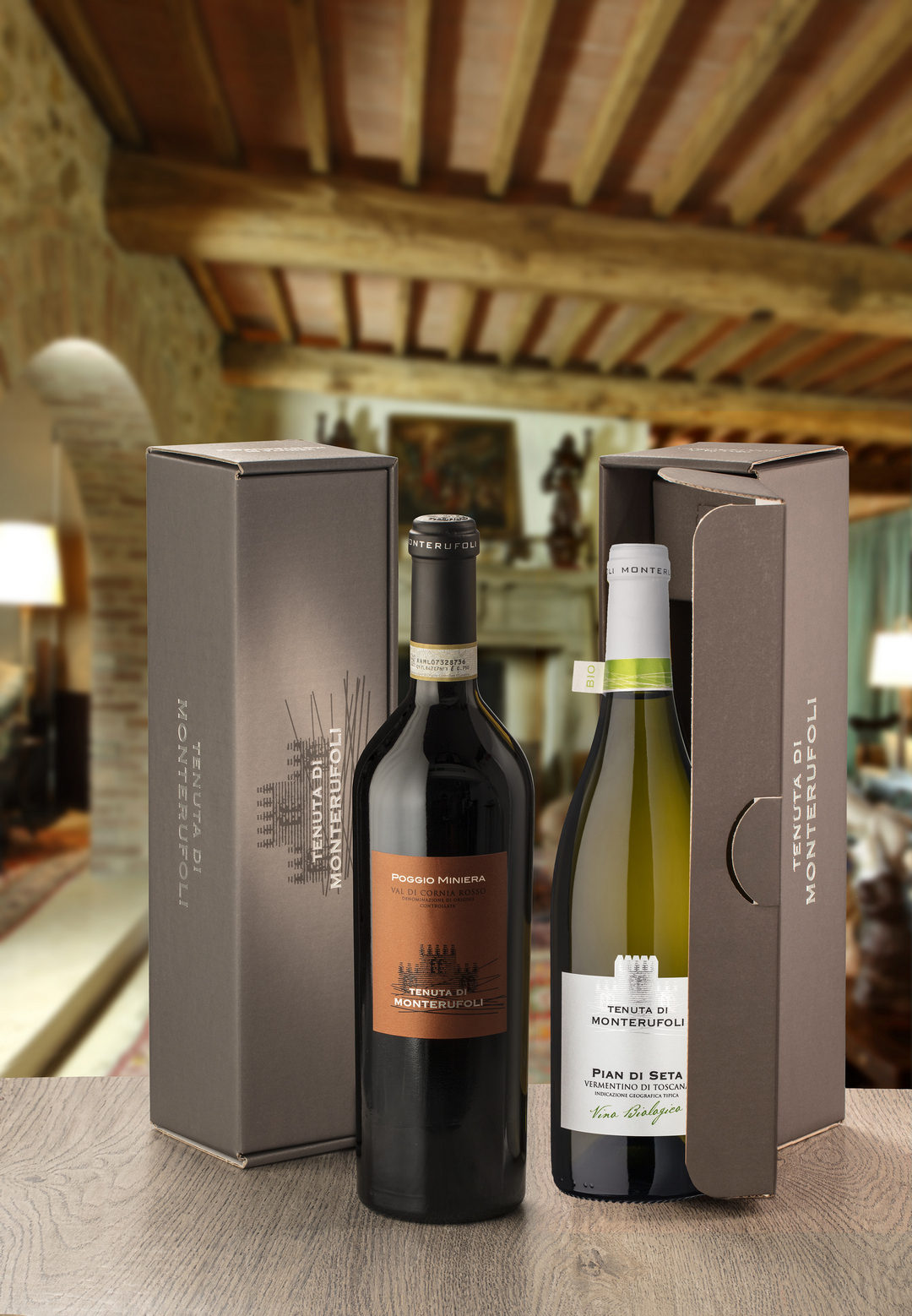Wine packaging is much more than just a wrapper—it's the bottle's attire, a visual and tactile narrative, and a direct bridge between producer and consumer. In the wine industry, where competition is fierce and quality is often a given, packaging becomes a crucial element in standing out and conveying the intrinsic value of each bottle while attracting new customers. As Francesco Ceccarelli, Marketing Manager, states, “Packaging is essential, and at Tenute del Cerro, we strive to capture the essence of each bottle while also telling a piece of our story and the magnificent territory where our wines are born."
What is wine packaging? where every element matters
Wine packaging consists of several elements: the bottle, the label, and the outer packaging. Every detail, even the most seemingly insignificant, plays a specific role in communicating the product's value and identity. Ceccarelli emphasizes that the choice of bottles can significantly impact how a wine is perceived in the market: “Bottles need to tell the story of the wine inside and be chosen accordingly while ensuring its safety." For example, high-end wines require more elegant and eye-catching bottles to stand out on shelves, while wines meant for long aging need thicker, darker glass to protect their contents from light and temperature fluctuations.
The label is another fundamental element: beyond its legal function, it plays a crucial role in guiding consumer purchasing decisions and telling the brand's story. Thanks to technology, labels can now integrate QR codes, allowing consumers to learn more about the wine and the winery itself. As Ceccarelli explains, “We focus on both the national and international markets, so it is essential for the bottle to present itself with a distinctive front image and a label that not only complies with regulations but also describes the wine's characteristics in two languages. Additionally, the QR code provides extra interactive information about the specific label, vintage, and production region", offering a valuable opportunity for brand awareness and strengthening the company's identity.

Wine packaging design: balancing aesthetics and functionality
Good wine packaging design must balance aesthetics and functionality, preserving the brand's identity while also looking toward the future. Packaging tells the story not only of the bottle but also of the producer's identity. However, in recent years, high-end packaging has often been used for lower-quality wines, aiming to capture consumer attention and sometimes misleadingly suggest a level of excellence the product does not actually possess.
When designing wine packaging, consistency between form and content is essential. As Ceccarelli states, packaging is “like a home for the wine". In the case of prestigious wines such as Brunello or Nobile di Montepulciano, it can enhance their prestige and highlight their excellence while maintaining a sense of refinement and elegance. 
The use of iconic elements, such as the cypress-lined avenue of Fattoria del Cerro, not only strengthens the brand's identity but also evokes a sense of place and belonging: “If a consumer from the other side of the world buys a bottle, for example, of Nobile di Montepulciano Silìneo DOCG, and then visits us at Fattoria del Cerro, they will see exactly that image. We aim to truly tell the story of the land and not conform to a modernity that risks making you resemble every other producer in the world". Similarly, in the case of the recent redesign of the Etrusca Line by Tenute del Cerro, the label was updated by modernizing the central element, the runes, which are Etruscan characters paying homage to the land and the history of these wines. “It's essential that the packaging is connected to that bottle and that brand", Ceccarelli continues. And then, how can we not think of Sagrantino Memoria, the renewed identity journey that creates a new experiential dimension for the prestigious Montefalco Sagrantino from Còlpetrone?
Even seemingly minor details, such as the capsules placed on top of the corks, receive great attention and care to ensure that every component contributes to a consistent, functional, yet always high-quality experience. "Our capsules feature our logo, to make them instantly recognizable to consumers or restaurateurs who store bottles lying down, for example", highlights Ceccarelli.
The key to standing out: the customization of wine packaging
Through bespoke design, labels meticulously crafted down to the finest details, and packaging that tells the story of tradition and innovation, packaging creates an authentic connection between the winery and the customer, becoming a privileged means of conveying the distinctive character of a wine and its producer. In this context, customization is one of the greatest opportunities offered by modern technology. It is precisely technology that has allowed, in recent years, to enhance the aesthetic appeal of cardboard and wooden products used for wine packaging, while simultaneously keeping costs in check. Since wine is a popular gift item, more and more companies are seeking the opportunity to uniquely express their brand identity, for example, through the use of custom-made packaging or boxes. 
Tenute del Cerro, for example, has in-house machinery that allows them to customize every aspect of the packaging, from the company logo to the brand's color palette, as well as the selection of premium materials, from special papers to cardboard and wood. "We can even personalize the refined wooden boxes by adding logos or conveying a message inside, using a special paper", says Ceccarelli. This approach allows them to meet the needs of high-end companies and clients looking for unique and distinctive gifts.
Customization goes beyond just the box or simple packaging. For Tenute del Cerro, every detail matters, and for this reason, even the protective packaging for couriers can be customized to reflect the brand's identity, ensuring the product arrives intact, yet always with elegance and style.

Sustainable wine packaging: a commitment to the future
Today, sustainability is an essential component of packaging design. Tenute del Cerro is committed to responsible choices: "For example, the bottles are designed with greater sustainability in mind. While maintaining the same shape, whether Bordolese or Borgognotta, technology has allowed us to reduce the bottle's weight by almost half, lowering CO2 emissions and consequently reducing pollution". But that's not all; there is also great attention to using FSC®-certified materials for labels and packaging. "Everything related to paper and wood comes from forests managed according to strict environmental and social criteria, and even the capsules use polylaminates instead of plastics", explains Ceccarelli. Sustainability is therefore not only about materials but also about design: the packaging must be beautiful, functional, and environmentally friendly. This balance is crucial to attract an audience that is increasingly conscious of environmental issues.
Wine packaging is therefore a powerful tool for communication and brand recognition, capable of telling stories, evoking emotions, and conveying values, while still maintaining its protective functionality. Through a combination of evocative design, detailed customization, and sustainable choices, Tenute del Cerro is able to enhance every bottle, bringing a piece of Tuscany and Umbria to the world. As Ceccarelli concludes, "there is no better brand awareness than this".

